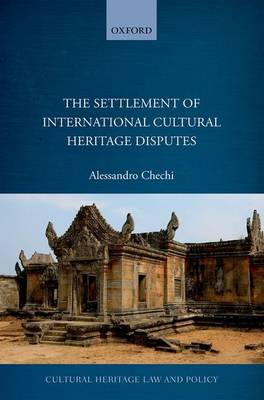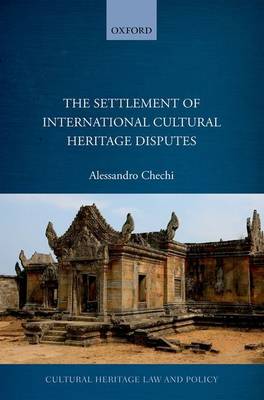
- Retrait gratuit dans votre magasin Club
- 7.000.000 titres dans notre catalogue
- Payer en toute sécurité
- Toujours un magasin près de chez vous
- Retrait gratuit dans votre magasin Club
- 7.000.0000 titres dans notre catalogue
- Payer en toute sécurité
- Toujours un magasin près de chez vous
Description
The past forty years have seen a wide proliferation of an extensive range of disputes under international law concerning cultural heritage. These disputes can concern a disparate variety of issues. A substantial number of have concerned the restitution of stolen and illegally exported art objects. Another set of controversies has involved the protection of immovable cultural heritage. Unlike other fields of international law, international cultural heritage law does not have an ad hoc mechanism of dispute settlement. As a result, controversies are to be settled through negotiation or, if this fails, through existing dispute resolution means, which include arbitration and litigation before domestic courts or international tribunals. This ad hoc fashion of dealing with disputes is not without consequences. The most serious problem is that the same or similar cases may be settled in different ways, thereby bringing about an incoherent and fragmentary enforcement of the law. This book offers a comprehensive and innovative analysis of the settlement of cultural heritage disputes. It addresses the means the potential fragmentation can be resolved by providing a two-fold analysis. First, it provides a detailed analysis of the existing legal framework and the available means of judicial and non-judicial dispute settlement. Second, it explores the feasibility of two solutions for overcoming the lack of a specialized forum. The first potential solution is the establishment of a new international court. The second concerns existing judicial and extra-judicial fora and means of increasing interaction between them by the practice of 'cross-fertilization'. The book focuses on the substance of such interaction, and identifies a number of culturally-sensitive parameters which need to apply (the 'common rules of adjudication'). Ultimately the book argues that existing judicial and non-judicial fora should adopt a cross-fertilizing perspective to use and disseminate
jurisprudence containing these common rules of adjudication, to enhance the effectiveness and coherence of their decision-making processes. Finally, it sets out how such an approach would be conducive to the development of a wider body of international cultural heritage law.
jurisprudence containing these common rules of adjudication, to enhance the effectiveness and coherence of their decision-making processes. Finally, it sets out how such an approach would be conducive to the development of a wider body of international cultural heritage law.
Spécifications
Parties prenantes
- Auteur(s) :
- Editeur:
Contenu
- Nombre de pages :
- 384
- Langue:
- Anglais
- Collection :
Caractéristiques
- EAN:
- 9780198703990
- Date de parution :
- 13-05-14
- Format:
- Livre relié
- Format numérique:
- Ongenaaid / garenloos gebonden
- Dimensions :
- 236 mm x 163 mm
- Poids :
- 717 g

Les avis
Nous publions uniquement les avis qui respectent les conditions requises. Consultez nos conditions pour les avis.






